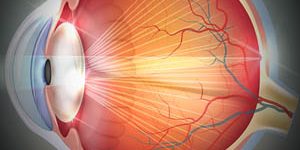Myopia Control
Serving San Jose CA
Myopia Control May Include:
- Orthokeratology (“ortho-k”) or Corneal Refractive Therapy
- Atropine Drops
- Multifocal contact lenses & eyeglasses
Levels of Myopia:
- Mild myopia: -0.25 to -3.00 D
- Moderate myopia: Between -3.00 to -6.00 D
- High myopia: More than -6.00 D
Myopia Control Prevents Risk of Ocular Disease

Cataracts
The rate of progression of myopia has been linked to the development of cataracts. The higher the level of myopia in a child, the faster the rate cataracts can develop when they get older.

Glaucoma
Glaucoma is when the eye develops an unusually high pressure, where this pressure can damage the optic nerve and cause vision loss. Nearsighted people have a 2-3x greater risk at Glaucoma.

Detached Retina
Levels of myopia also have a correlation to detached retinas. A detached retina is when the retina pulls away from the eyes tissue, often resulting in permanent vision loss.
Myopia Control Starts with You – The Parent
Your child’s eyes are his/her gateway into the world of learning. When your child’s vision is not functioning properly, learning and participation in recreational activities will suffer. Children are not likely to recognize vision problems like myopia, and it is, therefore, the responsibility of parents and teachers to recognize signs of visual problems in their children.
Children’s Eyesight May Change, Less Often With Myopia Control
Because changes in your child’s vision can occur without you or your child noticing them, your child should visit the eye doctor every year or more frequently if specific problems or risk factors exist. Myopia control attempts to reduce the number of changes that may occur in your child’s vision. With a successful myopia control program, an eye doctor can provide your child with amazing vision, track your child’s rate of myopia, and provide a clear road to healthy eyesight and a successful future.

Friday and Saturday: Early appts available on request